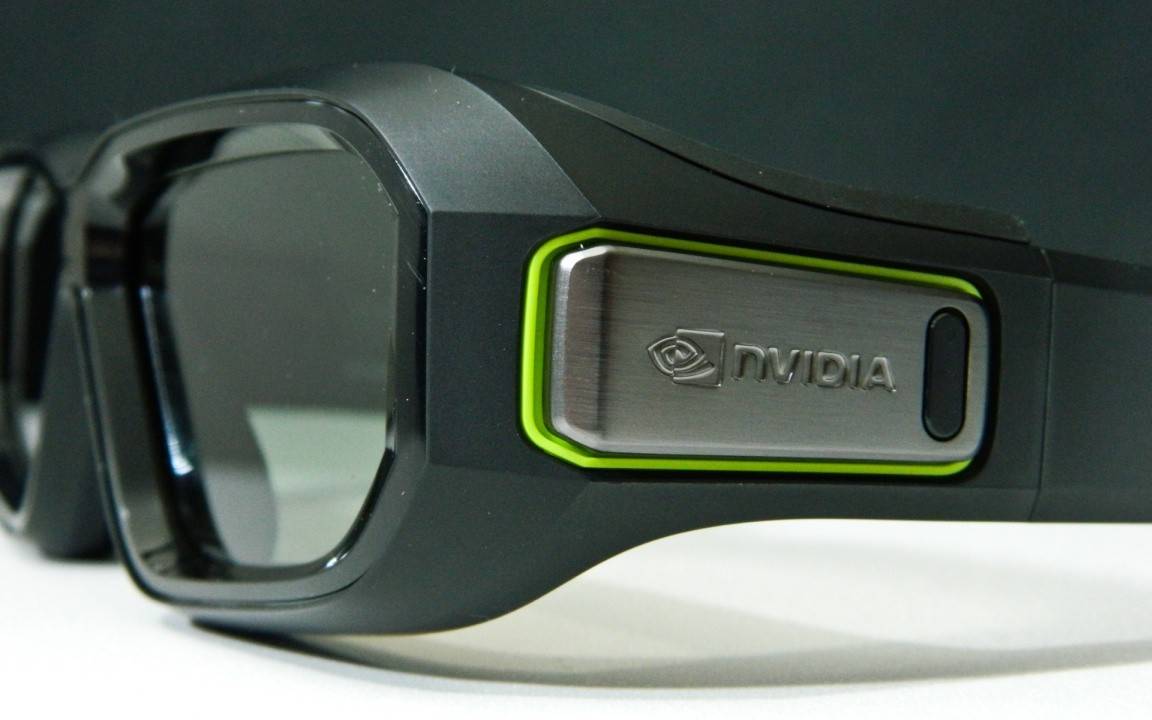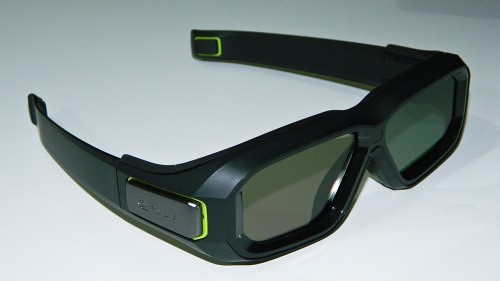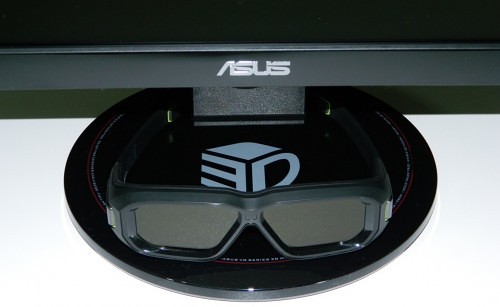Lucid Virtu MVP Issues with NVIDIA 3D Vision 2
MVP does its best work when coupled with entry or performance level graphics cards. While it’s suppose to be helpful in all configurations, I found MVP can actually hurt performance when paired up with high performance cards like the GeForce GTX 580, 670 or 680 in 3D mode. I also found that MVP can prevent NVIDIA Control Panel from opening properly. If you use the MVP directly from LucidLogix webpage, you shouldn’t have any issues. However, if NCP still doesn’t open, simply disable MVP which worked every time. If Intel’s HD 4000 graphics is suppose to work through MVP to assist 3D gaming, it’s going to need a little more polishing.
Examining NVIDIA 3D Vision 2 Comfort
So how do the new glasses fit? Well, I have a standard sized noggin with rather dashing facial features. The glasses sit pretty comfortably despite the generic shape of the frame and don’t slip thanks to the rubber bridge. The folding ear pieces have square rubber pads that grip your head snugly. The temple arms aren’t curved so they don’t actually allow the tips to site behind the ears.
Do they stay on when gaming? That depends on what you do with your head when you’re pwning your opponent or getting pwned by your opponent. I shook my head pretty vigorously to simulate a crazy gamer who just lost a $5,000 tournament and they stuck to my head pretty well compared to previous generation glasses. That brings us to the next point. How long before the glasses bug your head?
Being a physically active person, I can wear the glasses for hours if the game keeps me involved. However, my eyes are a different matter as they’re affected by the 3D monitor’s visuals. There is a direct correlation between visual fatigue and the visual source.
Examining NVIDIA 3D Vision 2 and ASUS VH278H 3D Performance
With the help of various members of my family, I scrutinized 3D performance over a solid two week period.
I found that the monitor’s emitter and glasses communicate very well and was quick. When a 3D program is running, the monitor detects the glasses on the user and the lenses slightly darken indicating they’re active. When looking away from the monitor, the glasses turn off the lenses which slightly lighten making it much easier to see your surroundings. In either case, the transition is very quick and offsets the monitor’s brightness very well. Another great thing is that the glasses needed recharging once in the two week time frame so if you forget your power cord at the LAN, it’s OK. You’ll live through the weekend without it.
The monitor was the defining factor in this visual test. Your experience will depend on which programmed video preset fits your preference. Remember, some of the presets are very bright as you’re expected to view the monitor through the slightly darkened 3D glasses. Naturally, you can manually turn down brightness for 2D viewing. Otherwise, here are my observations about each preset.
- Scenery Mode – The brightest of all presets. Can be over powering without 3DV2 glasses.
- Standard Mode – Uses lower video levels all around to create images easy on the eyes for average use. Best for working.
- Theater Mode – Slightly dimmer than Scenery mode with enhanced contrast.
- Game Mode – Similar to Theater with slightly sharper images.
- Night View Mode – Similar to Game mode with slightly more contrast.
- sRGB Mode – Meant for Photoshop or users who want to create a profile.
Ultimately, I found the video quality to be very vibrant, colorful and great contrasted at all times. With the exception of sRGB mode, the screen is still quite viewable through the 3D Vision 2 glasses which is very important. That’s the main reason why the ASUS VH278H monitor is so bright. Keep that in mind if you plan to do any 3D games.
Final Thoughts on NVIDIA 3D Vision 2 and the ASUS VG78H Bundle
So how does NVIDIA 3D Vision 2 measure up in this new world of 3D perception? Honestly, that will depend on the game and especially, if not more importantly, the 3D monitor you’re using. While many of the latest game titles have polished up the 3D effects, it’s still the monitor that portrays the image you’re hoping to see. And, 3D Vision 2 translates the overall 3D viewing experience thanks to the great new lens design and rechargeable features.
With the ASUS VH278H 1080p 3D monitor and 3D Vision 2, I have experienced the coolest games and video. It’s like watching everything brand new again. The monitor displays a picturesque image that many critics can appreciate. The colors are indeed vivid and the contrast is quite rich. While the high brightness is suited for 3D viewing by default, the monitor provides presets and manual tuning to please all. Most surprising was the sRGB setting allowing the monitor to service your work and play needs. It is truly something to behold through the lense of a pair of 3D Vision 2 glasses.
What we have here is a collaboration of the best software and hardware that money can buy. NVIDIA’s 3D Vision 2 glasses can be found from most major retailers for $99.99 US/CA for glasses only, or $149.99 US/CA if you need an emitter and your 3D compatible monitor doesn’t have one. This makes it possible to upgrade from 3D Vision 1 and it’s totally worth it. Mainly because of all the new features that increase performance and decrease fatigue. So if you have an old setup, you can still move to the new technology, however please note that Lightboost only works on newer monitors like the ASUS looked at here.
And, while you can find a smaller 23″ ASUS VG236H for about $359.99, our 27″ ASUS VG278H with its immaculate display and features can be found for $659.99. Basically, you’re spending a couple hundred more for the most perfect 3D Vision 2 bundle that money can buy. But whether you go small or go all the way, 3D Vision 2 has proven that NVIDIA’s technology is here to stay. It gets my Editors’ Choice Award.
Pros
- Better 3D Vision 2 design
- Rechargeable 50 hour lenses
- Larger, better quality lenses
- Flicker free powered 3D lenses
- Monitor picture is impressive
- Vivid colors and strong contrast
- Built-in adjustable 3D emitter
- Quick 3D transition with 3D Vision 2
- Largest 3D monitor available
- Best 3D experience and quality for the price
Cons
- Only monitor on the market to bundle 3D Vision 2
Overall Rating: 9.5 / 10.0





